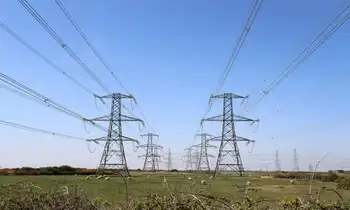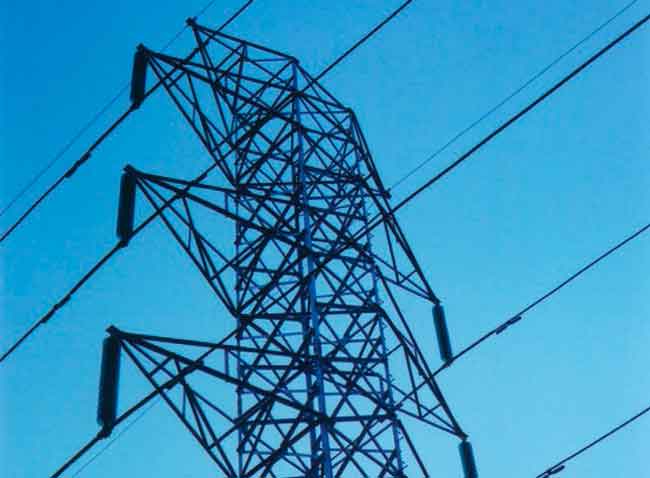Ontario Residents Cope With Second Day Of Blackout
TORONTO, ON -- - Millions of Ontario residents spent Day 2 of the biggest blackout in North American history hoping in vain for a steady supply of electricity and trying to keep cool during one of the hottest weeks of the summer. As power was gradually restored to pockets of the province early Friday morning, Premier Ernie Eves called on everyone to do their part to conserve energy by staying home from work and keeping the roads clear for ambulances, fire trucks and police vehicles.
The government has asked the largest industrial and commercial power users in the province to remain closed Friday.
Eves warned people to limit their water consumption as well.
He said the first priority was to make sure people were safe until the power was restored. In the meantime, Ontario residents were told to expect rolling blackouts.
"Our system has been put under tremendous stress," said Eves, who declared a state of emergency Thursday.
"We are not back to normal. Our Independent Electricity Operator will need to move power around as the need arises among many communities, making sure that we take care of the priorities such as hospitals, emergency services, water treatment plants."
Eves asked the province's 10 million residents to use as little power as possible until the total system was up and running, possibly by the end of the weekend.
Power was expected to return to two-thirds service by the end of the day, he said.
About 50 per cent of power was restored to the province Friday morning _ restoring lights, albeit intermittently, to cities including Toronto, Kitchener-Waterloo, London, Ottawa, Hamilton, Cornwall and North Bay.
Much of Toronto's downtown core lit up suddenly around 5:30 a.m. after most of the city had endured more than 12 sweltering hours without electricity and under an eerie darkness. Lineups quickly formed at gas stations and grocery stores by 6 a.m.
But hydro officials remained cautious about the province's electricity supply.
"It's probably around 50 per cent of what we would normally see," Terry Young, a spokesman for the Independent Energy Market Operator, which regulates Ontario's power supply, said Friday morning.
"We're going to continue to be short and there's going to continue to be difficulties."
Government offices were closed, but police, firefighters, ambulance dispatchers and workers at psychiatric hospitals and correctional facilities remained on the job. Provincial courts also remained open, but those affected by the blackout were advised that their court dates would be changed to Monday.
Buses and some streetcars were running in Toronto, but the city's widely used subways were at a standstill, and the Toronto Transit Commission warned they might not move again until Monday.
"The subway will not be running until the TTC can be assured of a stable power supply," the TTC said in a news release.
"Recent advice from Toronto Hydro indicates that this could be as late as Monday morning."
Instead, buses were running on subway routes.
"I'm not saying they're speedy; they're victims of whatever the stoplight situations are," said TTC spokeswoman Marilyn Bolton.
Parts of the city also reported limited water service.
With temperatures expected to reach 31C, the temptation to turn on air conditioners was hard to resist.
"Power conservation remains critical," Public Safety and Security Minister Bob Runciman said in a statement early Friday. "Even though power may be back on in your area, it's absolutely vital that everyone do their part to save energy and help the province through this emergency."
Young said more generators were expected to be reconnected to the power grid Friday, but he also cautioned people to use electricity sparingly.
"When we look at today, whether or not your power stays on is really up to you," he said. "We need people to reduce their demand for electricity."
Air Canada grounded all flights across the country until at least 4 p.m. ET on Friday after backup power was lost to the airline's "nerve centre," spokeswoman Laura Cooke said.
That's the operational centre where flights are planned, fuel is calculated for planes and flight crews are put together - and without it, the airline can't operate, Cooke said.
Toronto, a city of almost five million people, was paralysed when the blackout hit most of Ontario and a large chunk of the U.S. eastern seaboard at 4:15 p.m. Thursday.
Hours later, millions of people were left in the dark and without electricity as night fell. Officials worked feverishly to restore power to at least some of the towns and cities hit by a blackout of unprecedented impact.
Looting was reported in some areas of the nation's capital.
Some people broke into a bargain department store and lit a fire, while others broke windows at a Future Shop and stole electronic equipment, said Ottawa Chief Vince Bevan.
Overnight there were two deaths - one a 15-year-old who died in house fire, the other a man who was hit by a car following a street fight.
"It's believed the situation developed as a result of partying due to the power outage," said Bevan.
Ottawa's beaches were closed when waste water plants began discharging polluted water into the Ottawa River.
In Sudbury, about 170 miners who were stuck underground in a Falconbridge facility Thursday night were brought to the surface after the mine's elevator stopped working.
The miners had to spend the night in about four different Falconbridge mines after the blackout hit. Mine officials say they were brought to the surface about eight at a time when power was restored overnight.
They spent the night in refuge stations, which have running water and air piped in from the surface.
Toronto deputy police chief Mike Boyd said 38 major arrests were made overnight, which is more than usual.
"Overall we were slightly more busy than we would normally be on a regular evening," he said at a news conference Friday morning.
Fire officials said at the same news conference that people should refrain from using candles for lighting, citing a number of house fires Thursday night.
It was also announced that the Canadian National Exhibition in Toronto would open Saturday instead of Friday as originally scheduled.
In the United States, cities stretching from New York to Cleveland and Detroit were affected.
Thousands of people streamed onto the streets of lower Manhattan following the blackout in a scene reminiscent of the first hour after the Sept. 11 terrorist attacks.
Officials remained unclear on what caused the cascading blackouts across a 15,000-square-kilometre area, although Pentagon officials were quick to say it was not terrorism.
The blackouts also set off finger-pointing on both sides of the border.
The Prime Minister's Office initially said lightning had struck a power plant in the Niagara region on the U.S. side of the border, but later said there had been a fire at a power plant in Niagara Falls, N.Y.
Prime Minister Jean Chretien was "monitoring the situation" from his home in Lac-des-Piles, Que., where power was not affected, his office said.
Eves also insisted the huge blackout started in the United States, not Ontario, and ducked questions about whether his government is to blame in any way.
The New York Independent System Operator, which runs the state's wholesale electricity market and monitors power usage, said in a statement after midnight that it detected a fault west of the Ontario power system at 4:11 p.m., but did not release details of how or where it detected the fault.
While officials tried to sort out what went wrong, most in Ontario, home to more than 10 million people, were without electricity for at least several hours save for some in the province's northwestern reaches.
The blackout stretched to Ottawa in the east, Windsor in the southwest and Timmins in the north.
Some areas of Canada are vulnerable to blackouts if U.S. power goes down because the power grids are in some cases connected. Parts of Ontario and Quebec are on the same grid as the northeastern region of the United States.
Officials have said they are concerned about a surge once power is restored that could cause further blackouts as far as Manitoba and the American midwest.
Almost 40 years ago, on Nov. 9, 1965, Ontario and the northeastern seaboard experienced a similar blackout, although that was many years before businesses and citizens became so dependent on high-tech telecommunications.
Residents during that blackout were kept in the dark for anywhere from five minutes to 13 hours.
Related News

Honda Accelerates Electric Vehicle Push with Massive Investment in Ontario
TORONTO - The automotive industry in Ontario is on the verge of a significant transformation as Honda announces plans to build a new electric vehicle (EV) assembly plant and a large-scale battery production facility in the province. According to several sources, Honda is prepared to invest an estimated $18.4 billion in this initiative, signalling a major commitment to accelerating the automaker's shift towards electrification.
Expanding Ontario's EV Ecosystem
This exciting new investment from Honda builds upon the growing momentum of electric vehicle development in Ontario. The province is already home to a burgeoning EV manufacturing ecosystem, with automakers…




